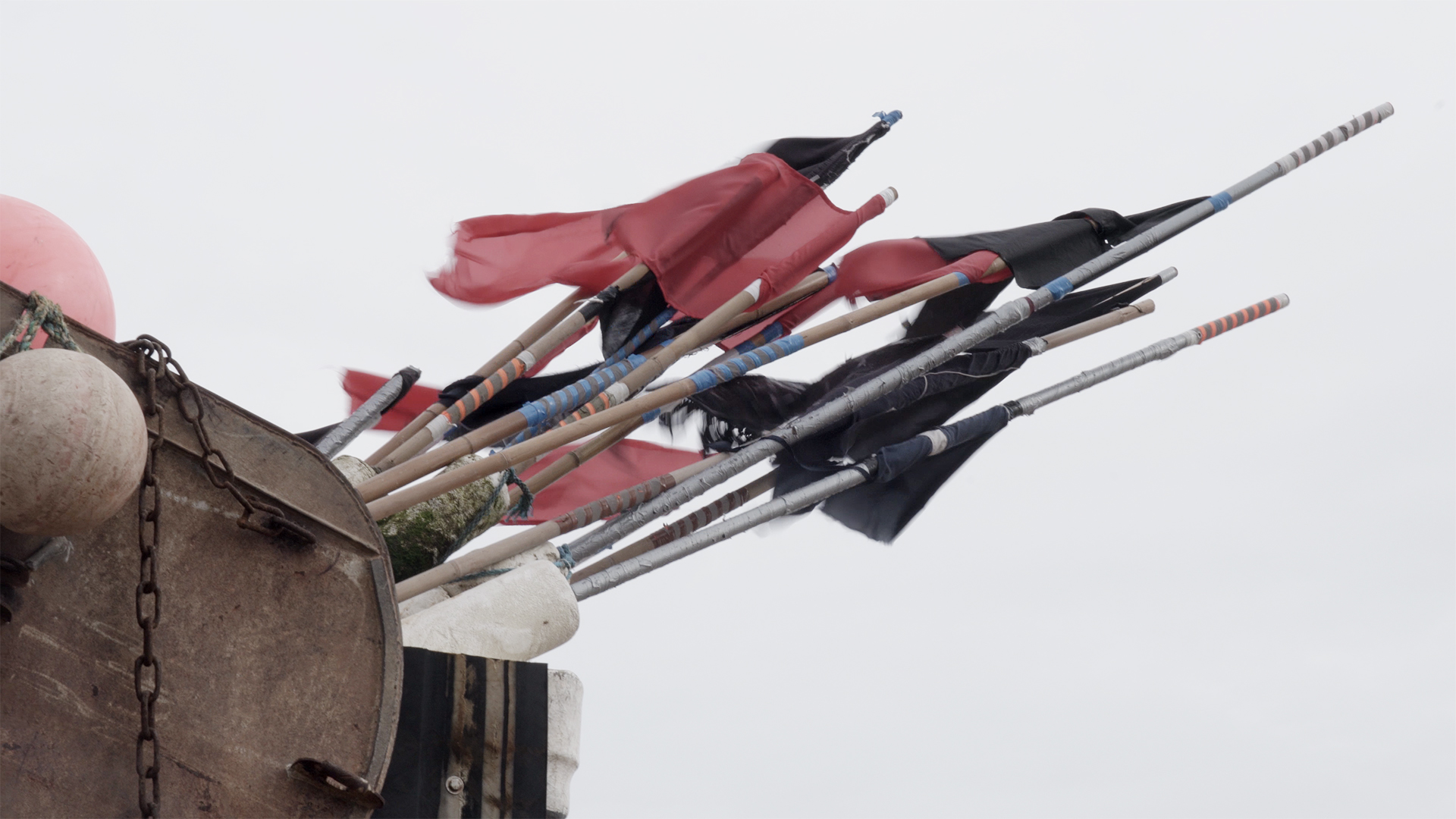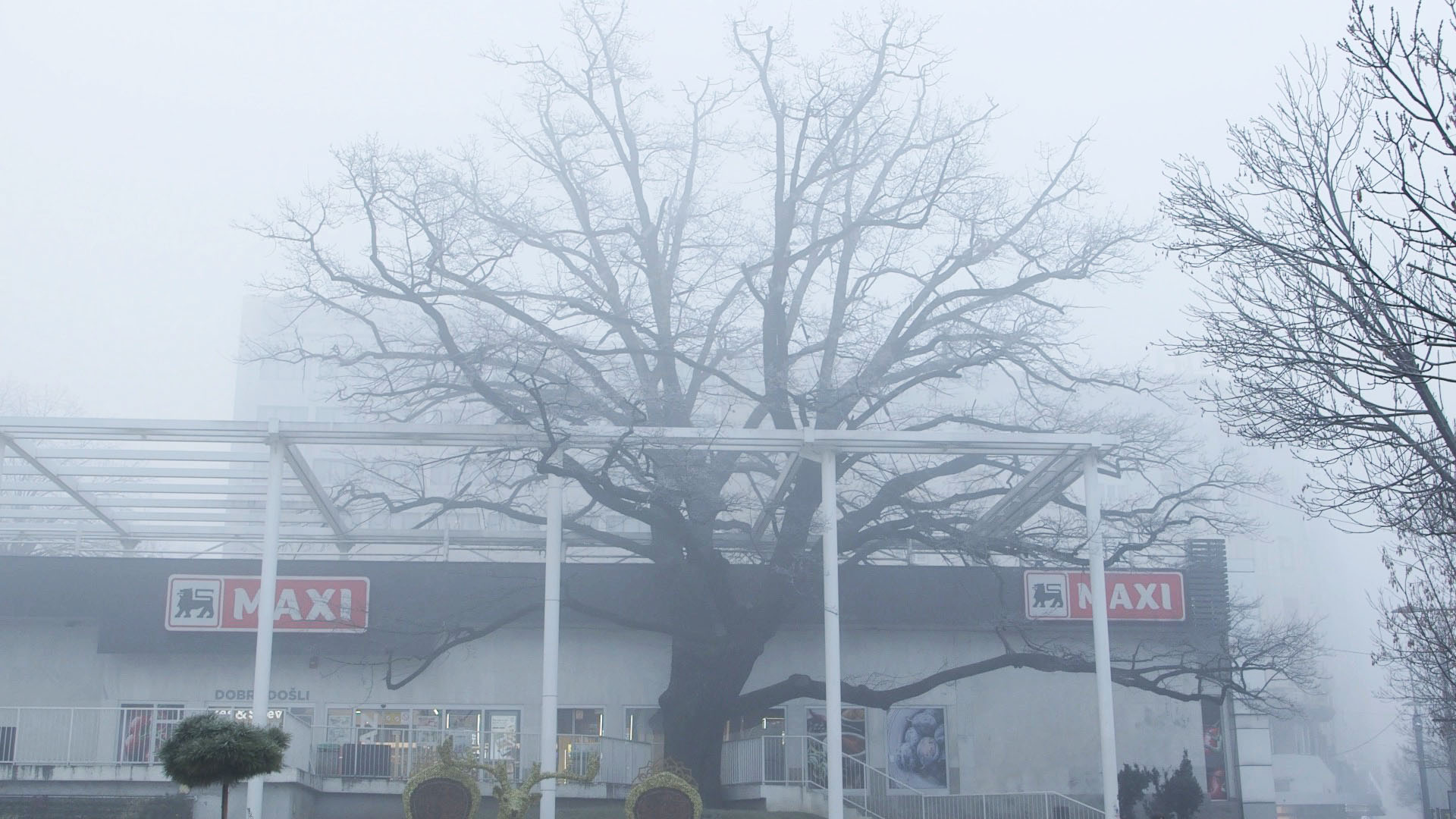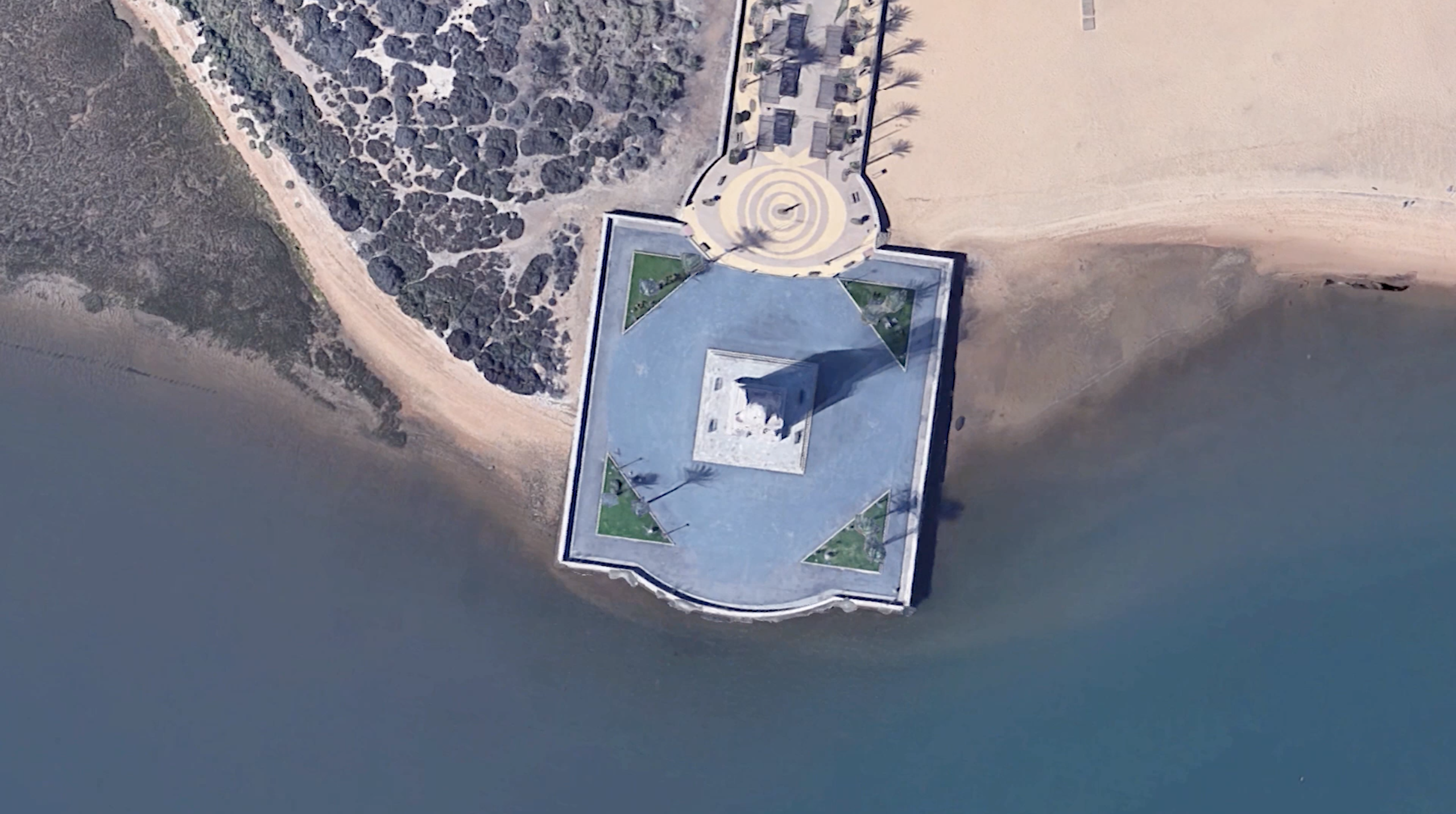17. April

Pirate Bay
Lisa Truttmann,
6’33'', 2020
Pirate Bay is a film portrait of the beach-based fishing fleet in Hastings, in south-east England. Poetic wanderings on a stormy late winter’s day lead us along the dormant boats lying on the beach at low tide. Through the rhythmic montage and a jazz composition with its fragmentary tones, the tourist seaside town becomes an abandoned battlefield studded by plundered ships – recalling constant quarrels on and about the sea, that have influenced the country’s economic strategies in the past as much as in current debates. A sparse dystopia by Lisa Truttmann, with music by Guido Spannocchi on alto sax, featuring Gina Schwarz on double bass.
RS
Pirate Bay / Piratski zaliv je filmski portret ribarske flote na plaži u Hejstingsu, na jugoistoku Engleske. Poetska lutanja u olujni dan kasne zime vode nas duž uspavanih čamaca koji leže na plaži za vreme oseke. Kroz ritmičnu montažu i džez kompoziciju sa njenim fragmentarnim tonovima, turistički primorski grad postaje napušteno ratište posuto opljačkanim brodovima - podsećajući na stalne svađe na moru i oko njega, koje su uticale koliko na ekonomske strategije zemlje u prošlosti koliko i rasprave u sadašnjosti. Proređena distopija Lize Trutmann, muzika Gvida Spanokija na alt saksofonu, u pratnji Đine Švarc na kontrabasu.

The Soul is in the Breath
Dušan Rodić,
6’33'', 2020
The Soul is in The Breath The video essay shows the oldest oak tree in Belgrade city center, the last tree originating from the old oak forest, which used to grow in that region.
Being 200 years old, it is a witness of the historical events and the cultural shift that took place in the relationship between people and trees.
RS
The Soul is in The Breath / Duša je u dahu - video esej prikazuje najstarije hrastovo drvo u centru Beograda, poslednje drvo poreklom iz stare hrastove šume, koja je nekada rasla u tom regionu. Budući da ima 200 godina, svedok je istorijskih događaja i kulturne promene koja se dogodila u odnosu između ljudi i drveća.

Vestiges(an archipelago)
Enar de Dios Rodrigues,
40’48’’, 2020
After water, sand is the most extracted natural material by humans, our society is built on it (quite literally) and contrary to what is thought, it is also a limited material whose extraction is causing irreparable damages in nature. This video essay in four chapters is part of Vestiges, an interdisciplinary project that investigates the insatiable demand of sand as well as its socio-political and environmental consequences.
“In fact, there is not just one, but many islands. Unlike me, they don’t have a specific start or end. Unlike us, their sand allows them to change their size and shape according to the dynamic diversity of its surroundings. In an attempt to understand them I created a typology in four chapters: the inverted island (the spaces where humans extract sand from), the temporary island (the spaces humans use to transport sand), the artificial island (the spaces where humans unload the transported sand) and the disappearing island (the spaces that humans nullify because of all the above). I’m really sorry the resultant videos are too humancentric. I tried my best. I just got caught up in a maze of colonialism, dredging machines, land reclamation projects and environmental refugees.” [Excerpt from the exhibition catalogue, download it here: enardediosrodriguez.com/Vestiges-ecatalogue.pdf
RS
Vestiges (an archipelago) / Tragovi (arhipelag) - Posle vode, pesak je prirodni materijal koji ljudi najviše ekspoatišu - naše društvo je na njemu izgrađeno (sasvim doslovno) - i suprotno onome što se misli, takođe je ograničeni materijal čije vađenje nanosi nepopravljivu štetu prirodi. Ovaj video esej u četiri poglavlja deo je "Tragova", interdisciplinarnog projekta koji istražuje nezasitnu potražnju peska kao i njene društveno-političke i ekološke posledice. „U stvari, postoji ne samo jedno, već mnogo ostrva. Za razliku od mene, oni nemaju konkretan početak ili kraj. Za razliku od nas, njihov pesak im omogućava da promene veličinu i oblik u skladu sa dinamičnom raznolikošću njihove okoline. U pokušaju da ih razumem, stvorio sam tipologiju u četiri poglavlja: obrnuto ostrvo (prostori iz kojih ljudi vade pesak), privremeno ostrvo (prostori koje ljudi koriste za prevoz peska), veštačko ostrvo (prostori u kojima ljudi istovaruju transportovani pesak) i ostrvo koje nestaje (prostori koje ljudi poništavaju zbog svega navedenog). Zaista mi je žao što su nastali video snimci previše humanocentrični. Dao sam sve od sebe. Samo sam upao u lavirint kolonijalizma, bagera, projekata melioracije i ekoloških izbeglica.“
[Odlomak iz kataloga izložbe preuzmite ovde: enardediosrodriguez.com/Vestiges-ecatalogue.pdf





